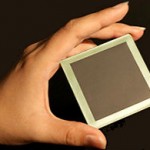Archive for 2011
Preliminary Evaluation of a Powered Lower Limb Orthosis to Aid Walking in Paraplegic Individuals
- Тип контента: Научная статья
- Номер документа: 4002
- Название документа: Preliminary Evaluation of a Powered Lower Limb Orthosis to Aid Walking in Paraplegic Individuals
- Номер (DOI, IBSN, Патент): 10.1109/TNSRE.2011.2163083
- Изобретатель/автор: Quintero, H.A., Goldfarb, M., Farris, R.J.
- Правопреемник/учебное заведение: Vanderbilt Univ., Nashville, TN, USA
- Дата публикации документа: 2011-11-05
- Страна опубликовавшая документ: США
- Язык документа: Английский
- Наименование изделия: Не заполнено
- Источник: http://ieeexplore.ieee.org/xpl/freeabs_all.jsp?arnumber=6033
- Вложения: Нет
- Аналитик: Не заполнено
 This paper describes a powered lower-limb orthosis that is intended to provide gait assistance to spinal cord injured (SCI) individuals by providing assistive torques at both hip and knee joints. The orthosis has a mass of 12 kg and is capable of providing maximum joint torques of 40 Nm with hip and knee joint ranges of motion from 105$^{circ}$ flexion to 30 $^{circ}$ extension and 105 $^{circ}$ flexion to 10 $^{circ}$ hyperextension, respectively. A custom distributed embedded system controls the orthosis with power being provided by a lithium polymer battery which provides power for one hour of continuous walking. In order to demonstrate the ability of the orthosis to assist walking, the orthosis was experimentally implemented on a paraplegic subject with a T10 complete injury. Data collected during walking indicates a high degree of step-to-step repeatability of hip and knee trajectories (as enforced by the orthosis) and an average walking speed of 0.8 km/hr. The electrical power required at each hip and knee joint during gait was approximately 25 and 27 W, respectively, contributing to the 117 W overall electrical power required by the device during walking. A video of walking corresponding to the aforementioned data is included in the supplemental material.
This paper describes a powered lower-limb orthosis that is intended to provide gait assistance to spinal cord injured (SCI) individuals by providing assistive torques at both hip and knee joints. The orthosis has a mass of 12 kg and is capable of providing maximum joint torques of 40 Nm with hip and knee joint ranges of motion from 105$^{circ}$ flexion to 30 $^{circ}$ extension and 105 $^{circ}$ flexion to 10 $^{circ}$ hyperextension, respectively. A custom distributed embedded system controls the orthosis with power being provided by a lithium polymer battery which provides power for one hour of continuous walking. In order to demonstrate the ability of the orthosis to assist walking, the orthosis was experimentally implemented on a paraplegic subject with a T10 complete injury. Data collected during walking indicates a high degree of step-to-step repeatability of hip and knee trajectories (as enforced by the orthosis) and an average walking speed of 0.8 km/hr. The electrical power required at each hip and knee joint during gait was approximately 25 and 27 W, respectively, contributing to the 117 W overall electrical power required by the device during walking. A video of walking corresponding to the aforementioned data is included in the supplemental material.
Категория: Ищем научные статьи | Нет комментариев »
Создан компактный топливный элемент на бензине
- Тип контента: Новостная статья
- Номер документа: 4249
- Название документа: Создан компактный топливный элемент на бензине
- Номер (DOI, IBSN, Патент): Не заполнено
- Изобретатель/автор: Не заполнено
- Правопреемник/учебное заведение: Не заполнено
- Дата публикации документа: 2011-12-05
- Страна опубликовавшая документ: Россия
- Язык документа: Русский
- Наименование изделия: Не заполнено
- Источник: http://www.membrana.ru/particle/17215
- Вложения: Не заполнено
- Аналитик: Helix
 О своём достижении авторы нового генератора рассказали в статье в Science (фото University of Maryland Energy Research Center).
О своём достижении авторы нового генератора рассказали в статье в Science (фото University of Maryland Energy Research Center).
Американцы испытали прототип крохотного устройства, которое генерирует электроэнергию напрямую из бензина, минуя риформинг топлива и промежуточные стадии преобразования его химической энергии.
Категория: Энергия | 1 Комментарий »
Iterative Learning Control Based on Radial Basis Function Network for Exoskeleton Arm
- Тип контента: Научная статья
- Номер документа: 3633
- Название документа: Iterative Learning Control Based on Radial Basis Function Network for Exoskeleton Arm
- Номер (DOI, IBSN, Патент): 10.4028/www.scientific.net/AMR.415-417.116
- Изобретатель/автор: Jinglong Bu, Jiao S., Jiang Z.
- Правопреемник/учебное заведение: College of Automation Engineering, Quingdao Univercity, Quingdao, China
- Дата публикации документа: 2011-12-01
- Страна опубликовавшая документ: Китай
- Язык документа: Английский
- Наименование изделия: Не заполнено
- Источник: http://www.scientific.net/AMR.415-417.116
- Вложения: Нет
- Аналитик: Не заполнено
 In this paper, we propose iterative learning control (ILC) scheme for exoskeleton arm driven by pneumatic artificial muscles (PAM), with special and unknown parameters, performing repetitive tasks. This desired control input of ILC was estimated by radial basis function (RBF) neural network incorporated experience database. An ILC controller, which uses the position of the joint where an angular sensor is used as the input of the ILC controller, is developed and tested on exoskeleton arm under well controlled conditions. RBF neural network was proposed to obtain the initial value of ILC. The experiment result on the experimental platform show that the algorithm is successful also in the application of exoskeleton arm.
In this paper, we propose iterative learning control (ILC) scheme for exoskeleton arm driven by pneumatic artificial muscles (PAM), with special and unknown parameters, performing repetitive tasks. This desired control input of ILC was estimated by radial basis function (RBF) neural network incorporated experience database. An ILC controller, which uses the position of the joint where an angular sensor is used as the input of the ILC controller, is developed and tested on exoskeleton arm under well controlled conditions. RBF neural network was proposed to obtain the initial value of ILC. The experiment result on the experimental platform show that the algorithm is successful also in the application of exoskeleton arm.
Категория: Ищем научные статьи | Нет комментариев »
Analysis of Small-Scale Hydraulic Systems
- Тип контента: Научная статья
- Номер документа: 7848
- Название документа: Analysis of Small-Scale Hydraulic Systems
- Номер (DOI, IBSN, Патент): Не заполнено
- Изобретатель/автор: Jicheng Xia, William K. Durfee
- Правопреемник/учебное заведение: University of Minnesota
- Дата публикации документа: 2011-11-30
- Страна опубликовавшая документ: США
- Язык документа: Не заполнено
- Наименование изделия: Не заполнено
- Источник: Не заполнено
- Вложения: Да
- Аналитик: Глаголева Елена
 We investigated small-scale hydraulic power system using a system level analysis, where small-scale refers to systems generating 10 to 100 Watts output power, to determine whether the high power density advantage of hydraulic power system holds at small sizes. Hydraulic system power density was analyzed with simple mathematical models and compared to an equivalent hypothetical electromecha-nical system constructed from high-end off-the-shelf components. Calculation results revealed that high operating pressures are needed for smallscale hydraulic power systems to be lighter than the equivalent electromechanical system.
We investigated small-scale hydraulic power system using a system level analysis, where small-scale refers to systems generating 10 to 100 Watts output power, to determine whether the high power density advantage of hydraulic power system holds at small sizes. Hydraulic system power density was analyzed with simple mathematical models and compared to an equivalent hypothetical electromecha-nical system constructed from high-end off-the-shelf components. Calculation results revealed that high operating pressures are needed for smallscale hydraulic power systems to be lighter than the equivalent electromechanical system.
Категория: Научные статьи | Нет комментариев »
Sensing Pressure Distribution on a Lower-Limb Exoskeleton Physical Human-Machine Interface
- Тип контента: Научная статья
- Номер документа: 7729
- Название документа: Sensing Pressure Distribution on a Lower-Limb Exoskeleton Physical Human-Machine Interface
- Номер (DOI, IBSN, Патент): doi:10.3390/s110100207
- Изобретатель/автор: Stefano Marco Maria De Rossi, Nicola Vitiello, Tommaso Lenzi, Renaud Ronsse, Bram Koopman, Alessandro Persichetti, Fabrizio Vecchi, Auke Jan Ijspeert, Maria Chiara Carrozza, Herman van der Kooij
- Правопреемник/учебное заведение: Scuola Superiore Sant'Anna, viale Rinaldo Piaggio, Biorobotics Laboratory, Institute of Bioengineering, Ecole Polytechnique Fédérale de Lausanne, Biomechanical Engineering Laboratory, Institute for Biomedical Technology and Technical Medicine (MIRA), University of Twente
- Дата публикации документа: 2011-11-30
- Страна опубликовавшая документ: Италия
- Язык документа: Английский
- Наименование изделия: Не заполнено
- Источник: Sensors 2011, 11, 207-227;
- Вложения: Да
- Аналитик: Глаголева Елена
 A sensory apparatus to monitor pressure distribution on the physical human-robot interface of lower-limb exoskeletons is presented. We propose a distributed measure of the interaction pressure over the whole contact area between the user and the machine as an alternative measurement method of human-robot interaction. To obtain this measure, an array of newly-developed soft silicone pressure sensors is inserted between the limb and the mechanical interface that connects the robot to the user, in direct contact with the wearer’s skin. Compared to state-of-the-art measures, the advantage of this approach is that it allows for a distributed measure of the interaction pressure, which could be useful for the assessment of safety and comfort of human-robot interaction. This paper presents the new sensor and its characterization, and the development of an interaction measurement apparatus, which is applied to a lower-limb rehabilitation robot. The system is calibrated, and an example its use during a prototypical gait training task is presented.
A sensory apparatus to monitor pressure distribution on the physical human-robot interface of lower-limb exoskeletons is presented. We propose a distributed measure of the interaction pressure over the whole contact area between the user and the machine as an alternative measurement method of human-robot interaction. To obtain this measure, an array of newly-developed soft silicone pressure sensors is inserted between the limb and the mechanical interface that connects the robot to the user, in direct contact with the wearer’s skin. Compared to state-of-the-art measures, the advantage of this approach is that it allows for a distributed measure of the interaction pressure, which could be useful for the assessment of safety and comfort of human-robot interaction. This paper presents the new sensor and its characterization, and the development of an interaction measurement apparatus, which is applied to a lower-limb rehabilitation robot. The system is calibrated, and an example its use during a prototypical gait training task is presented.
Категория: Научные статьи | Нет комментариев »
Статистика
Категорий: 179
Статей всего: 2,003
По типу:
Видео: 36
Выдержка с форума: 1
Контактные данные: 12
Научная статья: 1388
Не заполнено: 5
Новостная статья: 317
Обзор технологии: 42
Патент: 219
Тех.подробности: 34
Тип: 1
Комментариев: 8,957
Изображений: 3,005
Подробней...
ТОР 10 аналитиков
-
Глаголева Елена - 591
Дмитрий Соловьев - 459
Helix - 218
Ридна Украина))) - 85
Наталья Черкасова - 81
max-orduan - 29
Елена Токай - 15
Роман Михайлов - 9
Мансур Жигануров - 4
Дуванова Татьяна - 3
Календарь
| Пн | Вт | Ср | Чт | Пт | Сб | Вс |
|---|---|---|---|---|---|---|
| « Ноя | ||||||
| 1 | 2 | 3 | 4 | 5 | 6 | 7 |
| 8 | 9 | 10 | 11 | 12 | 13 | 14 |
| 15 | 16 | 17 | 18 | 19 | 20 | 21 |
| 22 | 23 | 24 | 25 | 26 | 27 | 28 |
| 29 | 30 | 31 | ||||
Авторизация
Ошибка в тексте?
Выдели её мышкой!
И нажми Ctrl+Enter